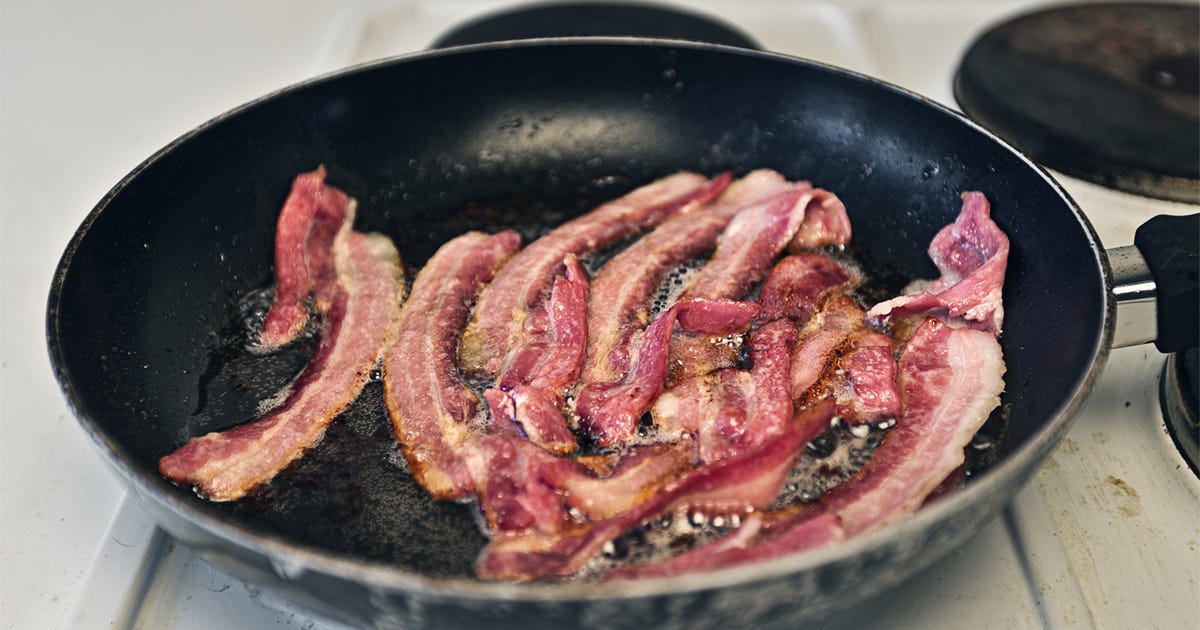Is FryAway the answer to pesky leftover bacon grease?
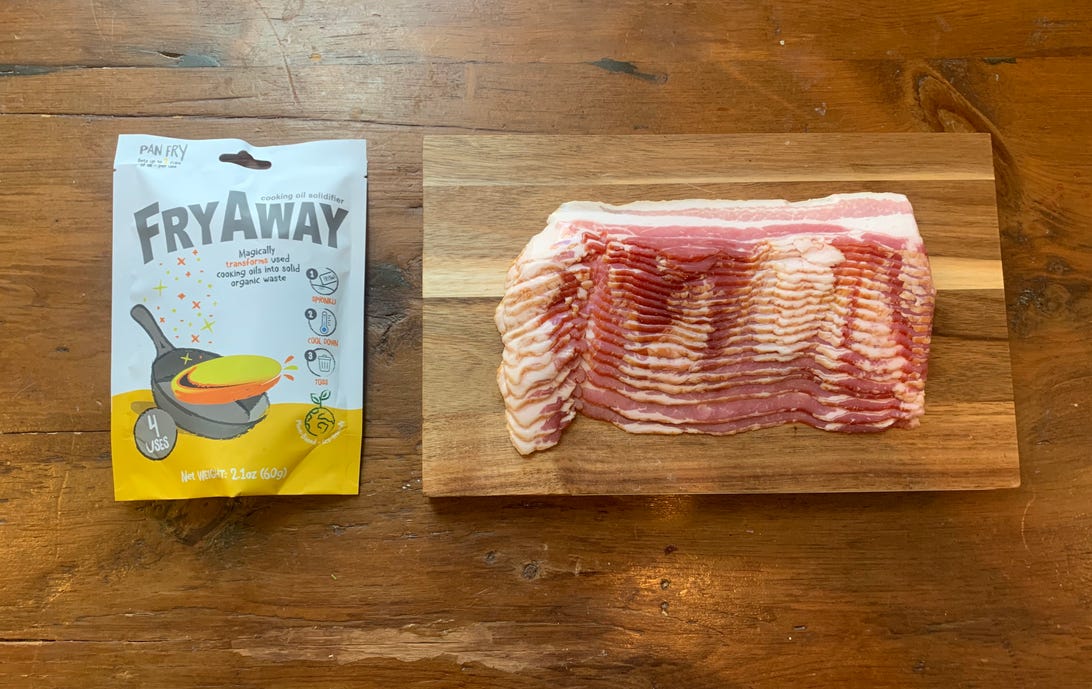
The makers of FryAway and Hard Oil claim their flakes turn leftover cooking oil from a greasy mess to an easy mass. I tried them both.
David Watsky/CNET
I would never speak ill of bacon, but it does have one glaring flaw. Finish frying that beautiful pork belly and you’re left with a whole lot of gnarly, hot oil to dispose of. I’ve grown accustomed to pouring it out in an empty aluminum can or coffee tin, but a few consumer kitchen innovaters think they’ve invented a better way.
FryAway and Hard Oil are organic cooking oil hardeners that you can buy online. The white flakes are derived from plant-based fats and are engineered to transform hot oil from liquid to solid. Once set, you can scoop the solidified oil out of the frying pan or Dutch oven and into the garbage pail with ease.
The reviews for FryAway were great on Amazon and the images of lasagna-sized blobs of oil being flopped into the garbage were both satisfying and enticing. Plus, this would be an excuse to cook an inordinate amount of bacon on a random Thursday morning. I was definitely going to try this stuff.
While I didn’t find it to be a complete waste of money, FryAway is definitely more useful for some specific grease- and oil-disposal jobs than it is for others.
Like
- The product does solidify cooking oil in about 30 minutes
- Good for disposing of large quantities of oil used in deep frying
Don’t Like
- The solid mass didn’t lift away from the pan as it was shown to on the packaging
- Not helpful for bacon grease or smaller amounts of oil
FryAway doses come premeasured in separate packages within the bag. Each is about half an ounce and should work on up to 8 cups of oil. A package with enough for four uses costs $13 on Amazon. A bag of Hard Oil with twice the amount of solidifying substance is $20 (currently sold out). Hard Oil comes loose with a half-ounce scoop to measure it yourself.
To test FryAway and Hard Oil I cooked a pound of bacon, much to the delight of my terrier Freddie. I used some vegetable oil to make sure there was plenty of liquid in the pans after. I ran the test using both FryAway and Hard Oil in three different pans — nonstick enamel, cast iron and stainless steel — to see how well they worked with various cooking surfaces.
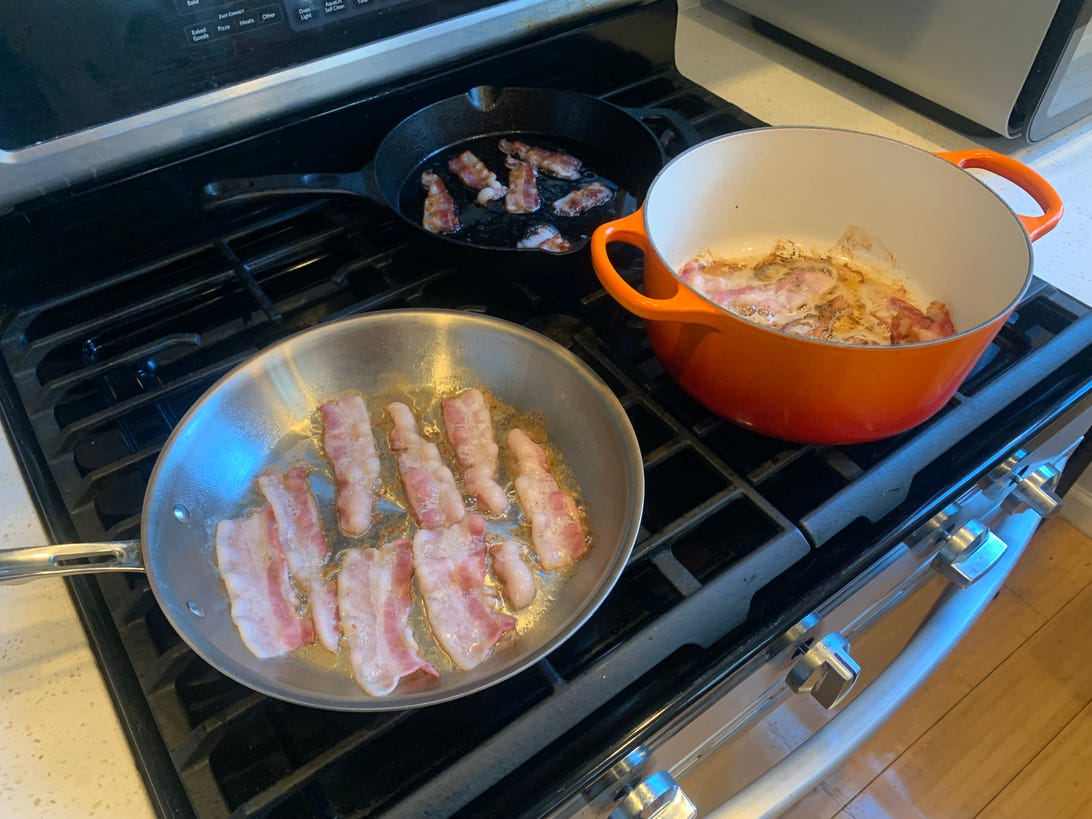
It was a good morning in the Watsky home.
David Watsky/CNET
As directed, I mixed the prescribed dose of flakes in with the hot oil once the food had been removed and let it sit for about an hour (or longer if you’re solidifying an especially large quantity of oil.) Both products are simple and straightforward to use.
Note, you must physically mix the substance and mix it well. It won’t dissolve on its own and getting it incorporated proves vital. For one of the tests, I let the oil cool for too long and the flakes did not dissolve. That pan’s oil didn’t harden at all so I had to reheat it to melt the flakes.

One package should harden up to 8 cups of cooking oil.
David Watsky/CNET
How well does it work?
After about 20 minutes, I could visibly see the oil start to congeal and change from clear to cloudy white. Another 10 minutes and the oil in both pans appeared to be completely solid but still seemed adhered around the sides. I opted to give it the full hour to set per the directions.
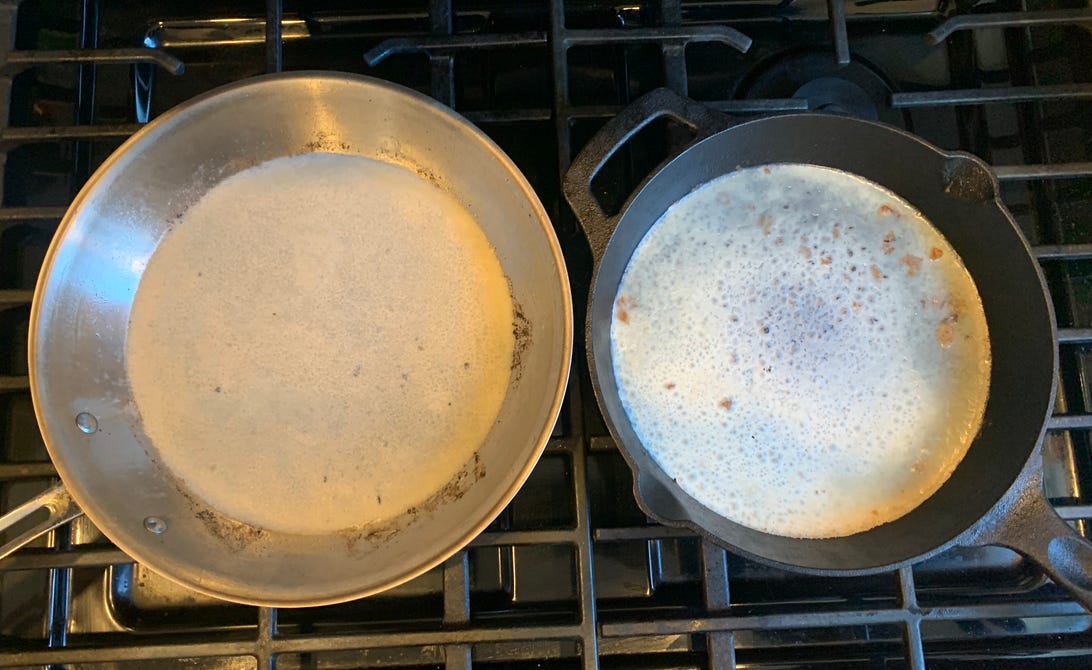
After 30 minutes or so, the oil was mostly set.
David Watsky/CNET
A full hour into the cooling and it was time to scoop. Just from the look of it, I could tell it wasn’t going to emerge from the pan in one satisfying pan-shaped blob the way it appears to on the website. My fears were confirmed when I dug a thin rubber spatula into the side of the white mass. It was sort of like scooping wax, and it eventually had to be scraped out in sections.
The results were about the same for each cooking surface, although fat in the nonstick enamel pan came away the easiest, followed closely by the cast iron. Stainless steel took the most scraping, but not by much. There was also no discernible difference between the oil hardened with FryAway versus Hard Oil.
Not worth it for bacon
Bacon is the no. 1 offender in my home when it comes to leftover oil. Unfortunately, neither FryAway or Hard Oil made discarding it any easier. I’ll be sticking to my system of pouring the grease into an old coffee can and letting it congeal on the counter or in the fridge.
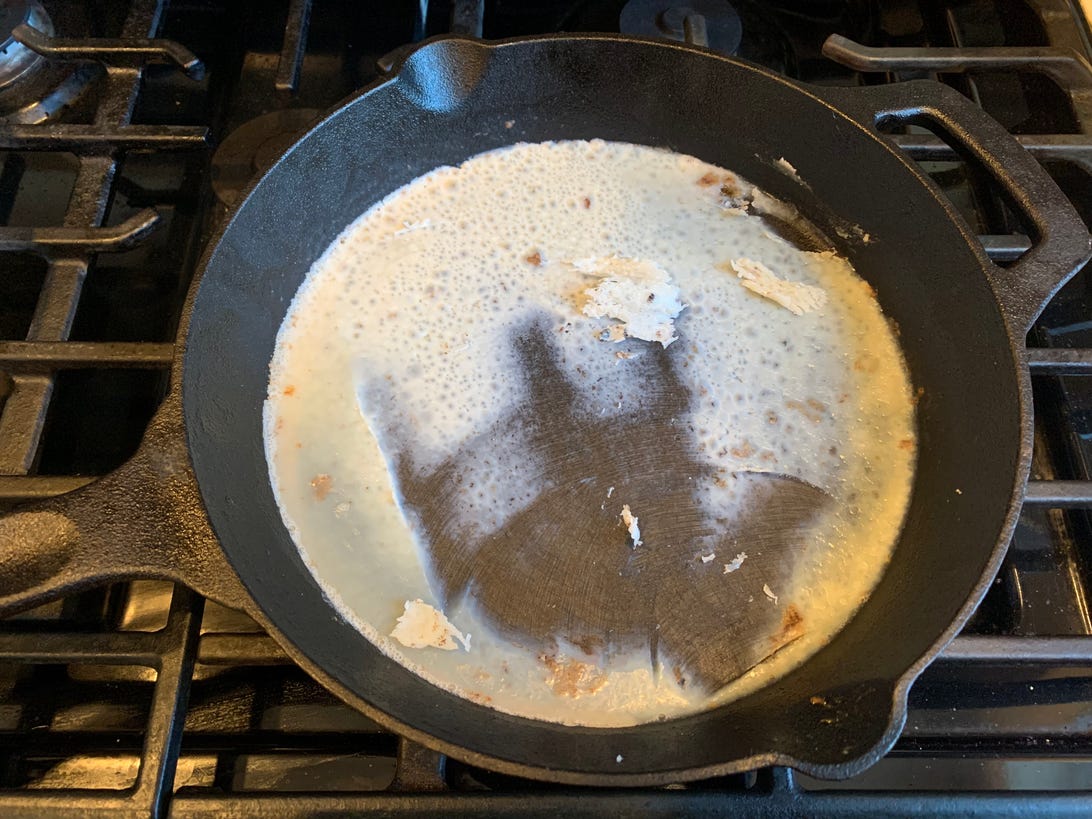
The hardened grease did not pull away from any one of the pans in a satisfying glob the way I’d hoped.
David Watsky/CNET
What it is useful for
While a half-inch of residual bacon grease will congeal on its own, that’s not necessarily the case with large quantities of frying oil. If you regularly deep fry chicken or other things in your Dutch oven or home deep fryer, you’ve probably got a whole lot more than a half-inch to deal with. In those instances, FryAway or Hard Oil makes sense. You won’t want to pour that much grease in liquid form into the garbage and freezing it to discard (another option for safe disposal of oil) is a fraught and messy affair.
For all you deep fryers without a great system for discarding the oil afterward, I’d suggest stocking a package of FryAway for your next session.
For the casual pan-fryers and weekend bacon makers, save your $13 for a package of Oscar Mayer. It’s getting very expensive.
For all the latest world News Click Here

